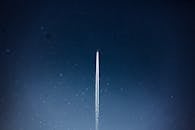**SpaceX’s Starship Flight 9: Learning from Booster Loss in Pursuit of Success**
In a groundbreaking display of interstellar ambition, SpaceX’s Starship Flight 9 recently took off, only to experience a catastrophic booster loss that left engineers scratching their heads and wondering if they should have just stuck to building really fast cars. Elon Musk, the man with a plan and a penchant for tweeting, was reportedly seen in Mission Control wearing a tinfoil hat, muttering, “If we can’t land on Mars, at least we can make it look like we tried!”
Witnesses reported that the launch was so dramatic, it could have been a Hollywood blockbuster. “I thought I was watching a Michael Bay film,” said local resident and self-proclaimed rocket enthusiast, Bob “The Rocket Man” Johnson. “There were explosions, flames, and I’m pretty sure I saw a raccoon fly by. It was beautiful!”
In the aftermath of the launch, SpaceX engineers held an emergency meeting where they brainstormed new strategies. “We’re considering a new approach,” said Chief Engineer, Dr. Fizzlebottom McRocketface. “Instead of boosters, we might just attach a bunch of fireworks. They’re cheaper, and who doesn’t love a good show?”
Meanwhile, Musk took to Twitter to reassure fans, tweeting, “Every failure is just a step closer to success. Or a really expensive firework show. Either way, we’re winning!”
As the dust settles on this latest adventure, one thing is clear: SpaceX is committed to learning from its mistakes, even if those mistakes involve sending a multi-million dollar rocket into a fiery oblivion. After all, in the world of space exploration, it’s not about how many boosters you lose, but how many raccoons you can launch into orbit.









